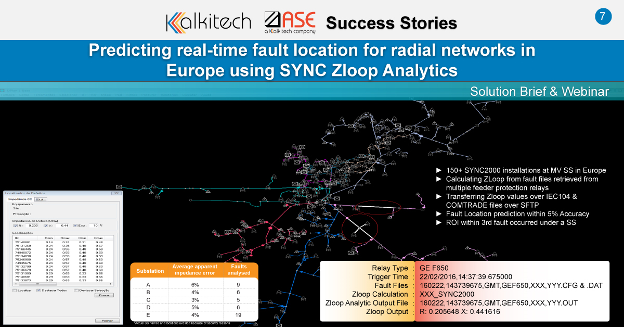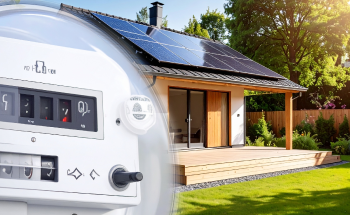Predicting real-time fault location for radial networks in Europe using SYNC Zloop Analytics

Kalkitech December 25, 2023

Customer: Utility in Europe, ranks among Europe's major electricity operators, as well as one of the country’s largest business groups
Industry: MV Substations
Scale: 150+ installations in MV Substations
Business Case:
- The utility wanted to get locations predicted for the faults detected by the existing protection relays in the MV grid. This prediction was aimed at achieving accuracy within 10%.
- All the fault files generated by the protection relays within the substation should be made available in the control center in a common standard format (COMTRADE) for further analysis.
- As the configuration of protection relays was separately managed by vendor tools, the new system introduced should be completely non-intrusive and in line with the working scenario of the existing system.
- As the system was highly critical, it was essential to have very high security – firewall and VPN weresuggested between the central system and the substation data collector by the utility IT team.
Solutions:
- Fault File Collection -- SYNC Protocol Gateways / Data Concentrators were used to retrieve the Fault Files from all the vendor IEDs using the vendor protocol drivers available inside SYNC Gateways. These retrieved Fault Files would be in vendor DR format. The relays envisaged for the requirements were from ABB (SPA), Alstom (Courier and IEC 103), GE (GE Specific ModbusTCP), Siemens (IEC103), and IEC61850 relays from multiple vendors.
- Data Conversion -- SYNC Protocol Gateways had an inbuilt mechanism to convert the vendor-dependent Fault File format to a common COMTRADE format. These COMTRADE files were pushed to the central system using SFTP protocol for the centralized fault analysis.
- Zloop Analytic Algorithm – Zloop analytic algorithm was performed on the COMTRADE files to derive the fault loop and calculated the respective impedance values. The quality values of the same were also calculated for applying the same. These values were sent to the central location being mapped over IEC104 and getting updated whenever there were new faults.
- Data to Central system -- SYNC Protocol Gateways pushed the Fault files and loop impedance calculated files to the central system using SecureFTP protocol. Loop impedance values were sent to Genesys SCADA/DMS, having real-time information about network topology at the fault instant, using the IEC104 protocol.
- Fault Location prediction -- Genesys uses the line database with impedance values for each segment from GE SmallWorld GIS DB to convert X into location and calculates a possible location area between (XLoop – error x Zloop) and (XLoop + error x Zloop).
Key Benefits:
- The project provided key benefits for utility in locating the faults within an accuracy of 5% (against the targeted 10%), faster fault recovery, a non-intrusive installation commissioned with the substations in full operation.
- It also provided the utility with additional benefits of relay time synchronization in the proprietary protocol. It also provided them Transparent / Pass-through channel with priority for a mechanism for remote relay configuration and allowed a single channel from the relay to be used for data retrieval and config purpose.
- The installation needed a very small investment per substation (one SYNC2000 per substation, for all the MV lines!). According to the utility, the 3rd successful fault located in the substation paid the investment!
Webinar Link: Webinar on the complete Solution




